A gentle baby soap recipe using nourishing oils and shea butter. Lavender helps relax little ones after a long day.
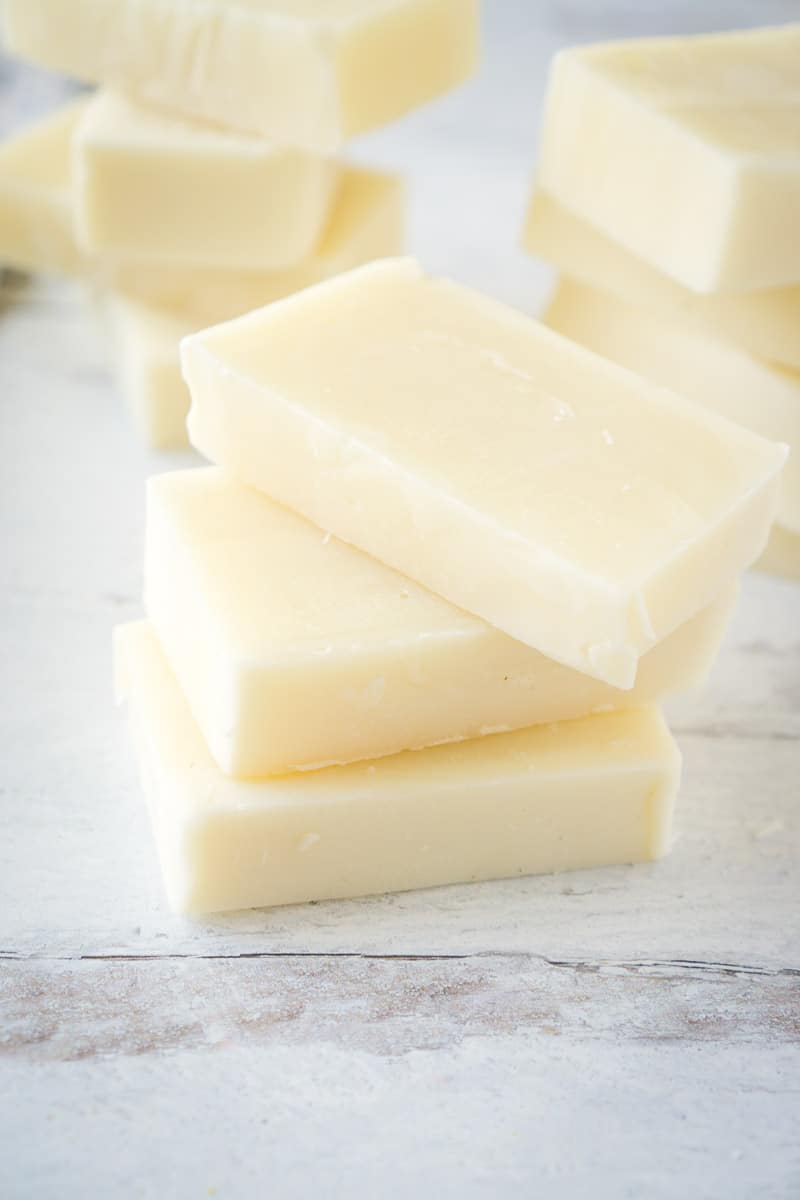
Table of contents
What makes a good baby soap recipe?
If you are familiar with soap making, you know that different oils have different properties that they bring a bar of soap. Some are nourishing, some are extra cleansing, some make the bar harder. A baby soap should get your little nice and clean, but most importantly, it should be moisturizing and gentle.
This recipe is very gentle on the skin. There is a pretty good amount of coconut oil (a very cleansing oil) to ensure the day’s grime is washed away, but that is balanced by a lot of olive oil, and some almond oil, which is both very gentle.
Shea butter and beeswax help make the bar harder as well as nourishing baby’s skin.
And finally, lavender essential oil leaves a relaxing fragrance without adding any chemicals.
Please note that since this is a real lye soap, it is not tear free. It will sting little one’s eyes, so please be careful!
Ingredients and tools you will need
- A digital scale
- A stick blender
- A soap mold (I used this 10-inch mold for this recipe)
- Coconut oil (look for it in bulk at Bramblerry.com or Bulk Apothecary)
- Beeswax (pellets are the easiest type to work with)
- Olive oil (any kind will do)
- Shea butter
- Sweet almond oil
- Lye
Step by step:
Like all soap recipes, we begin by measuring out the lye and water into two separate containers. Mix them together by adding the lye to the water and stirring until dissolved. The solution will get very hot. Set it aside to cool in a safe place.
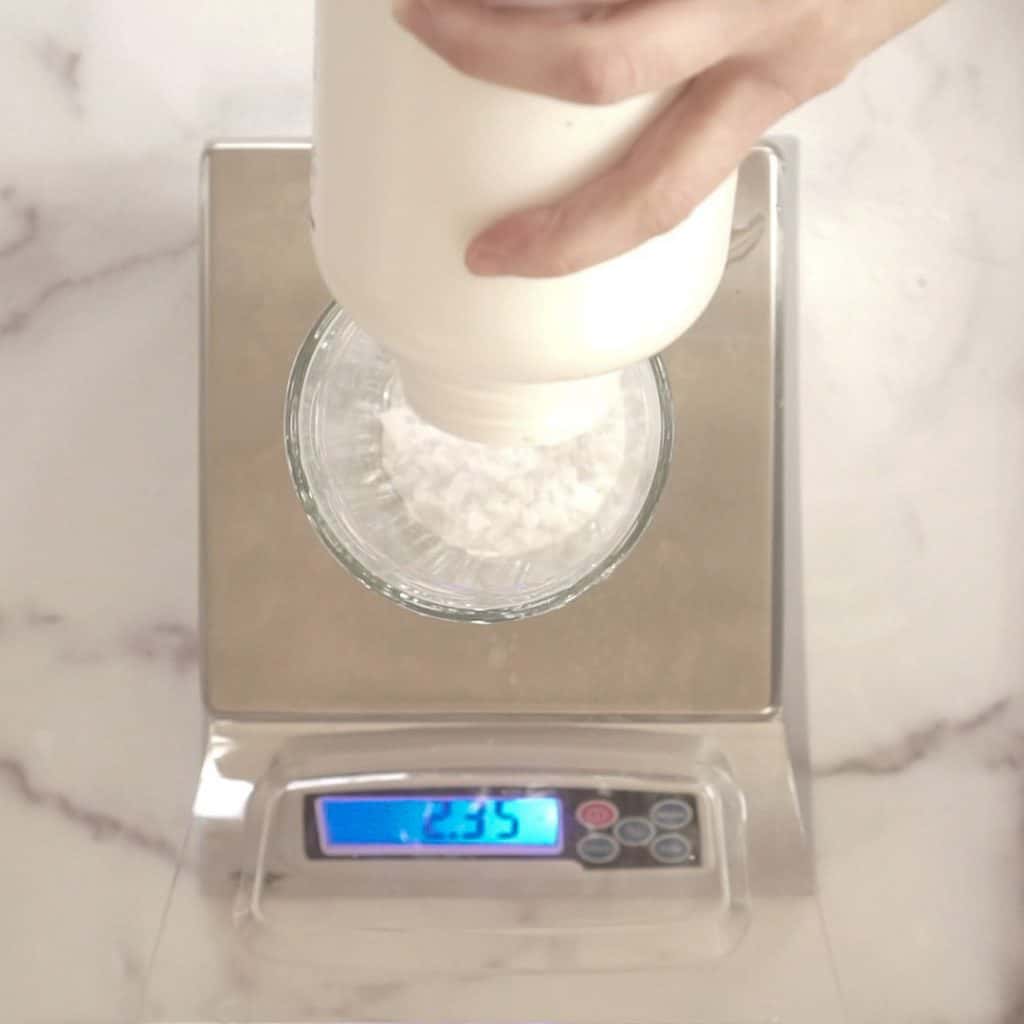
While the lye water is cooling, measure out the oils. Since this recipe contains beeswax, which is slow to melt, I like to give it a head start in the microwave. Measure all the soil oils (coconut, shea butter, and beeswax) and place them in a microwave-safe bowl or measuring cup. Microwave on low for a minute or two until they begin to melt.
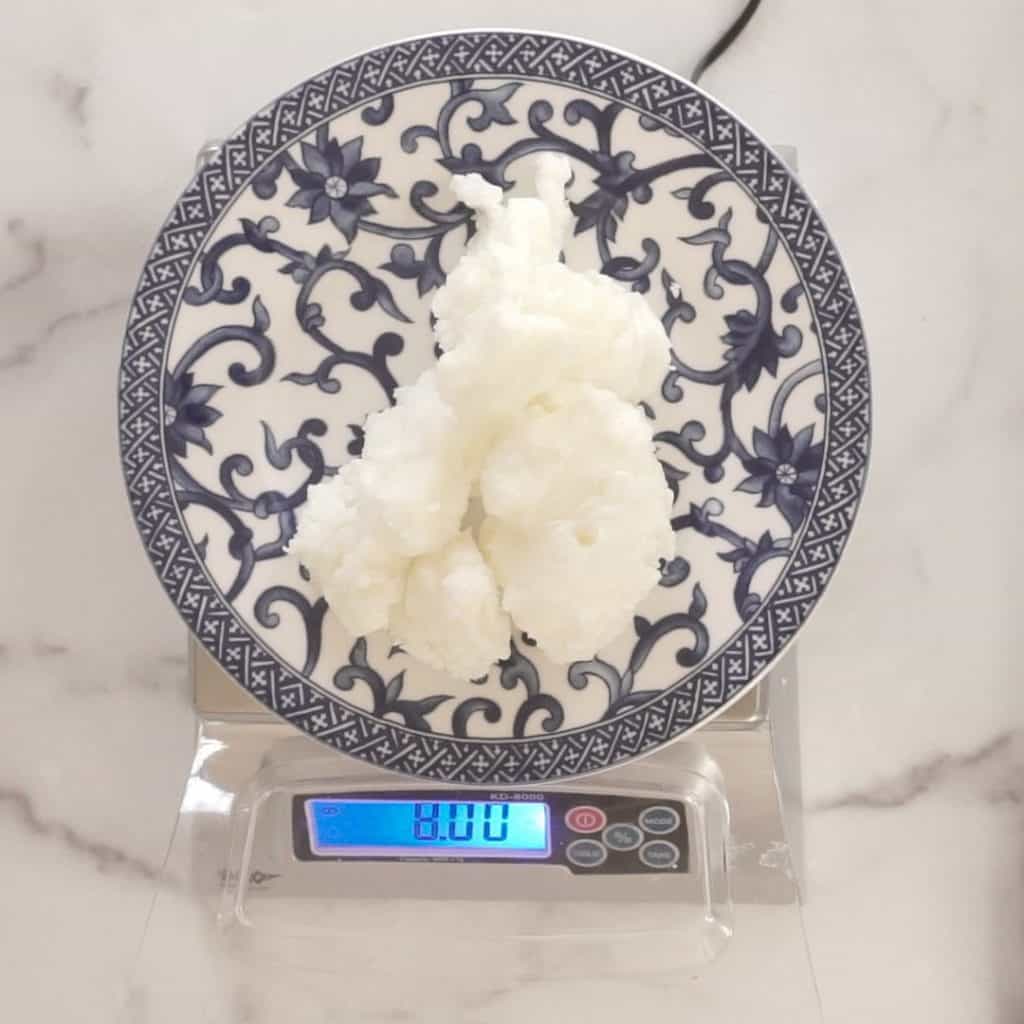
Measure the olive oil and almond oil. (I pour them right into the pot, but you should technically measure them out in separate containers.)
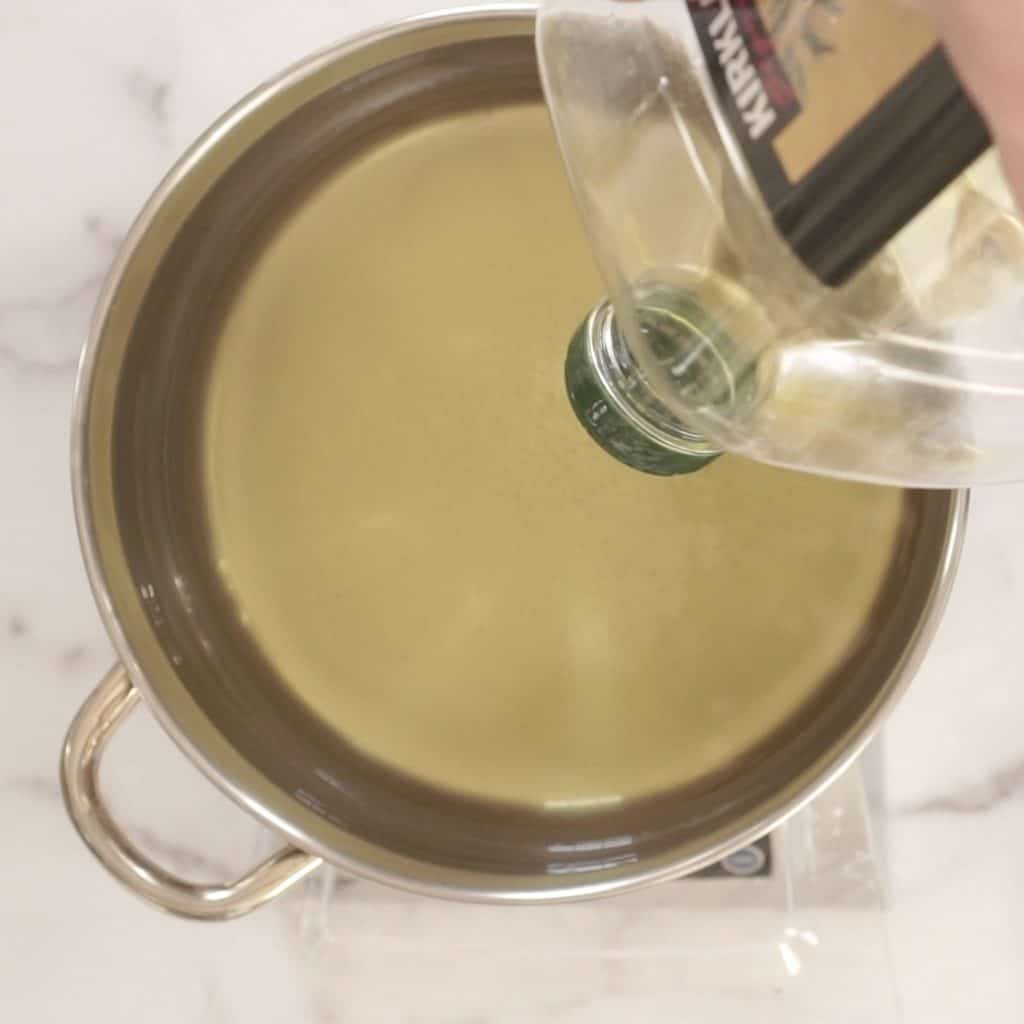
Now pour the pre-softened hard oils into the liquid oils and melt them all together. This will take a few minutes on the stovetop on low. You want them fully melted and about 140 degrees.
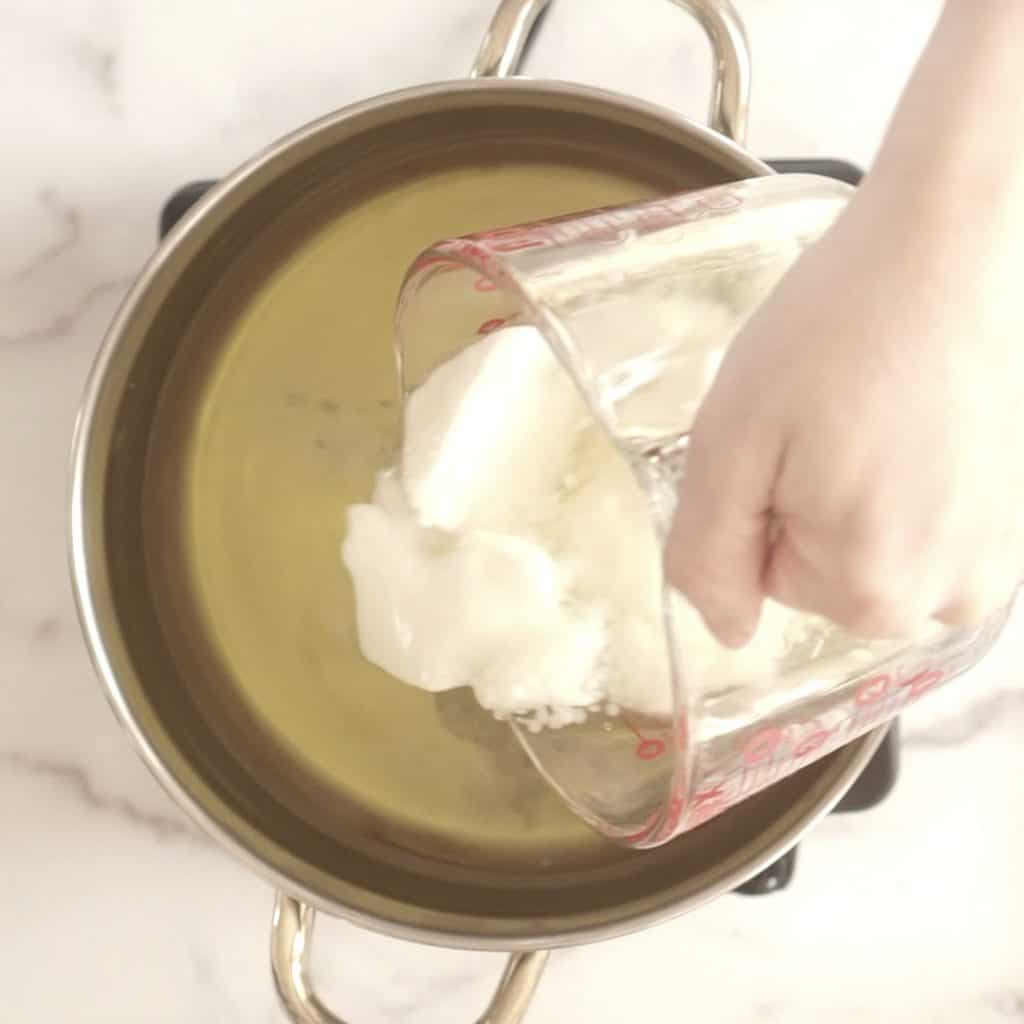
After the oils have melted, they need to cool. We want the lye water and the oils to be about 100-110 degrees. Ideally, they will be very close together in temperature.
This will take a few hours, depending on the temperature of your room. Once they have cooled off enough, it time to combine them into soap.
Before you begin, make sure you have your mold and fragrance ready to go. Pour the lye water into the melted oils and blend with your stick blender until you reach “trace”.

There should be so visible spots of oil, and the solution will thicken until it looks like a batter. When you lift up your stick blender, the soap will leave a trail that rests on top, rather than immediately sinking in.
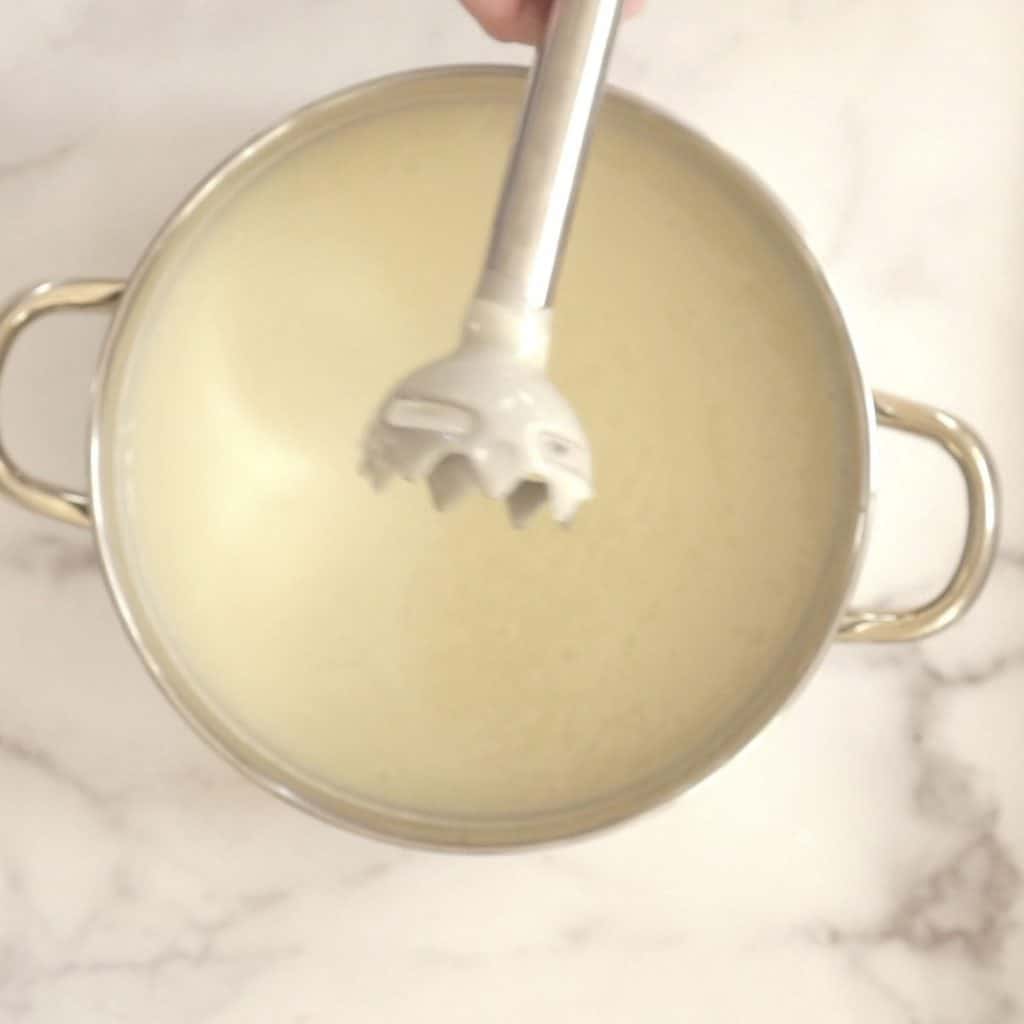
When trace is reached, add the fragrance and stir in by hand. Once the fragrance is added, it will start to set up very quickly. Immediately pour the soap into the mold.

Wrap the baby soap in an old blanket so that it will retain its heat as it cures. Let it sit, undisturbed, for one day, then turn out of the mold and cut into bars.
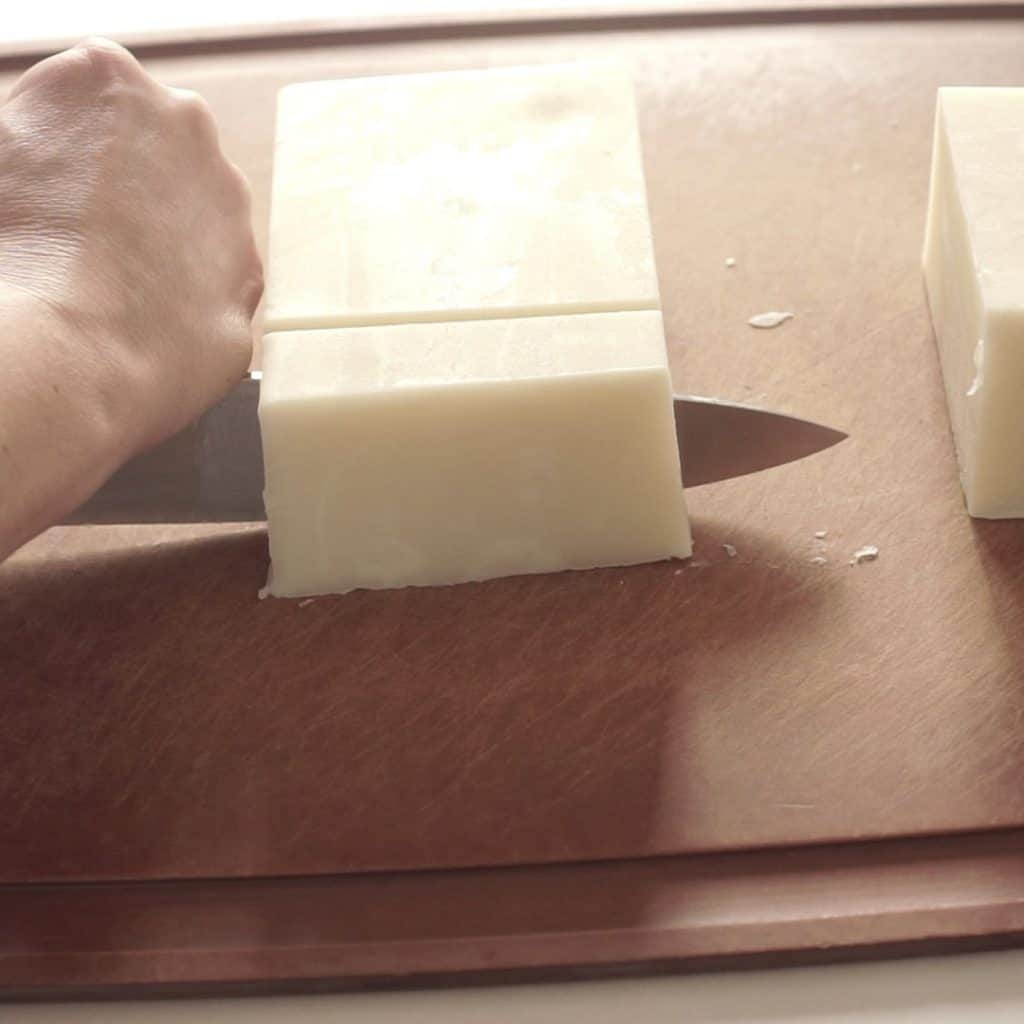
This soap is very high in olive oil, which means it will improve with a long cure time. It will be safe to use after 2 weeks, but after a month it will be a harder bar that will last longer.
Here’s the printable recipe!
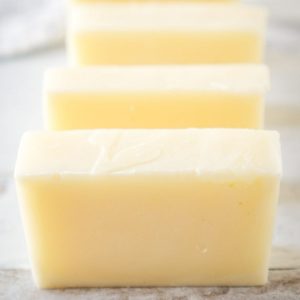
Gentle Cold Process Baby Soap Recipe
Ingredients
- 3 ounces sweet almond oil
- 8 ounces coconut oil
- 14 ounces olive oil
- 4 ounces shea butter
- 1 ounce beeswax
- 4.10 ounces lye
- 8 to 11 ounces water
- 2 tablespoons lavender essential oil or fragrance oil optional
Save This Recipe
You'll join my email list which you will love. And if you don't, unsubscribe in one click. ❤️
Instructions
- Measure out the lye and water into two separate containers, using a digital scale. Add the lye to the water (not the other way around) and stir until it’s fully dissolved. It will get hot. Set it aside to cool in a safe place.
- Measure out the oils and butters in separate containers. (Or at least measure the solid oils in one container, and the liquid oils in another.) Melt the solid oils, then add them to the liquid oils and melt on the stovetop on low until 140 degrees. Set aside to cool.
- When the lye and the oils have both cooled down to about 110 degrees, it’s time to make the soap. Prepare your mold and any fragrance you are using. Pour the lye water into the melted oil and blend with a stick blender. Blend until the soap reaches “trace”, meaning that it has turned into a slightly thickened batter. There should be no visible oil droplets, and. if. you lift up your stick blender, the soap that comes off of it will rest on top of the soap instead of just sinking in. If you are adding fragrance, measure it out and stir by hand.
- Immediately pour the finished soap into the mold. Cover with an old towel to insulate. it so it heats up evenly. After 24 hours, turn out and cut into bars. Allow. to cure for 2-3 weeks before using. Store in a dry, cool place.
Video
Notes
- 10% sweet almond oil
- 26.67% coconut oil
- 46.67% olive oil
- 13.33% shea butter
- 3.33% beeswax
- 6% superfat
Looking for more homemade things for baby?
- This homemade hand cream would be lovely for elbows, knees, and any other dry patches on a little one’s skin. Just make sure to choose a skin safe essential oil, or leave it out all together.
- If you have mango butter on hand, you can try this moisturizing soap recipe, also suitable for babies.
Any questions? Leave me a comment, and I will do my best to help.
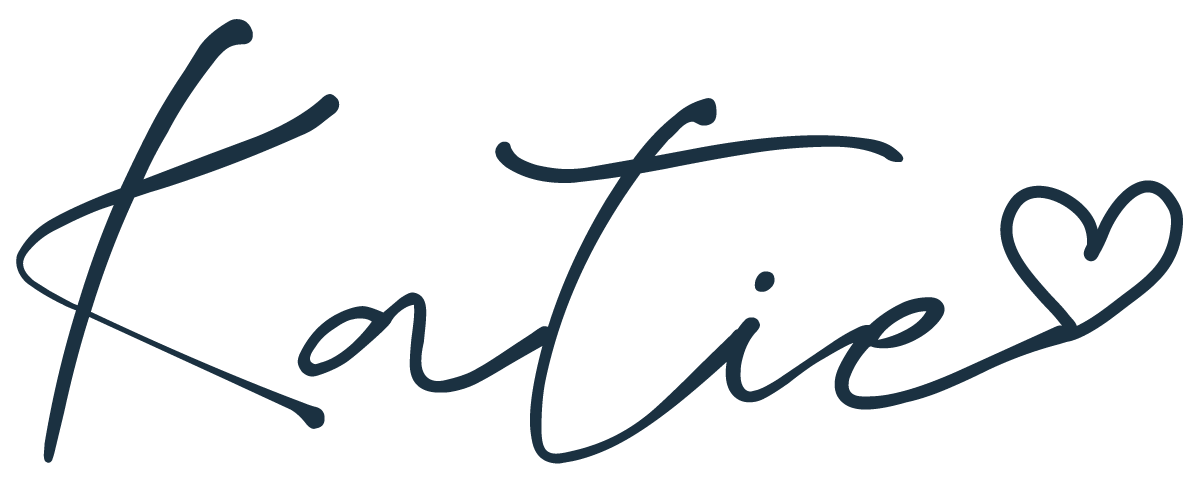

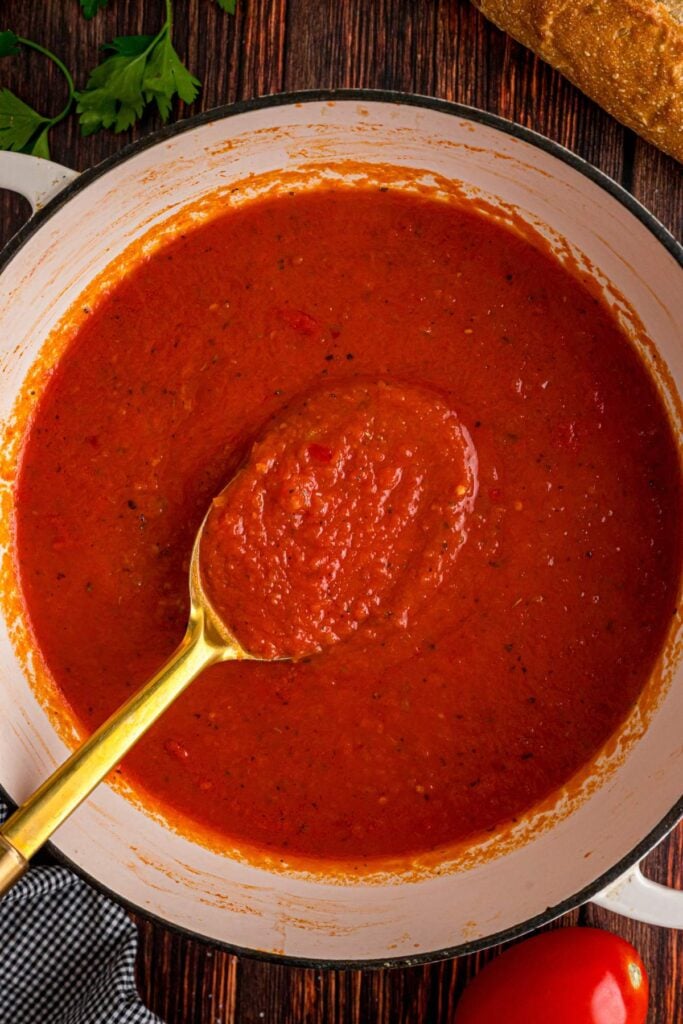
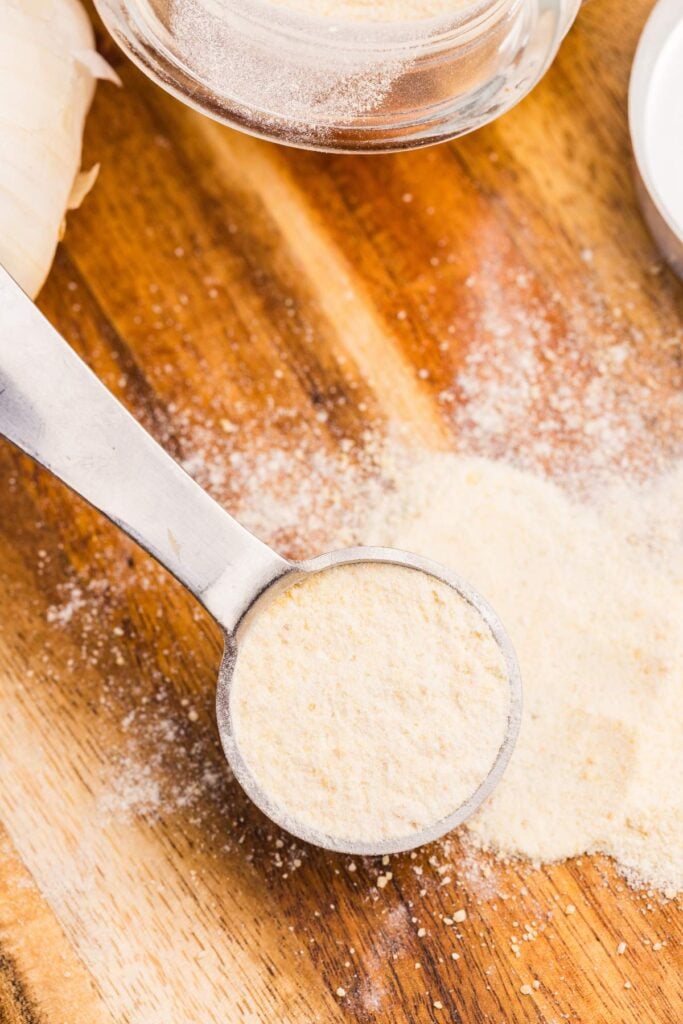
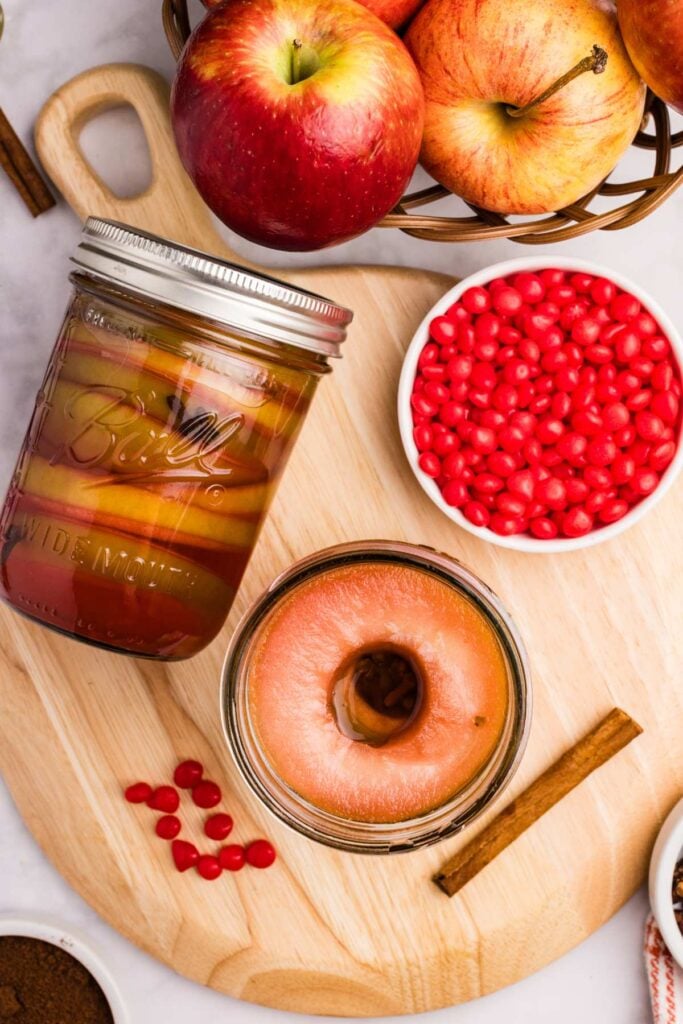
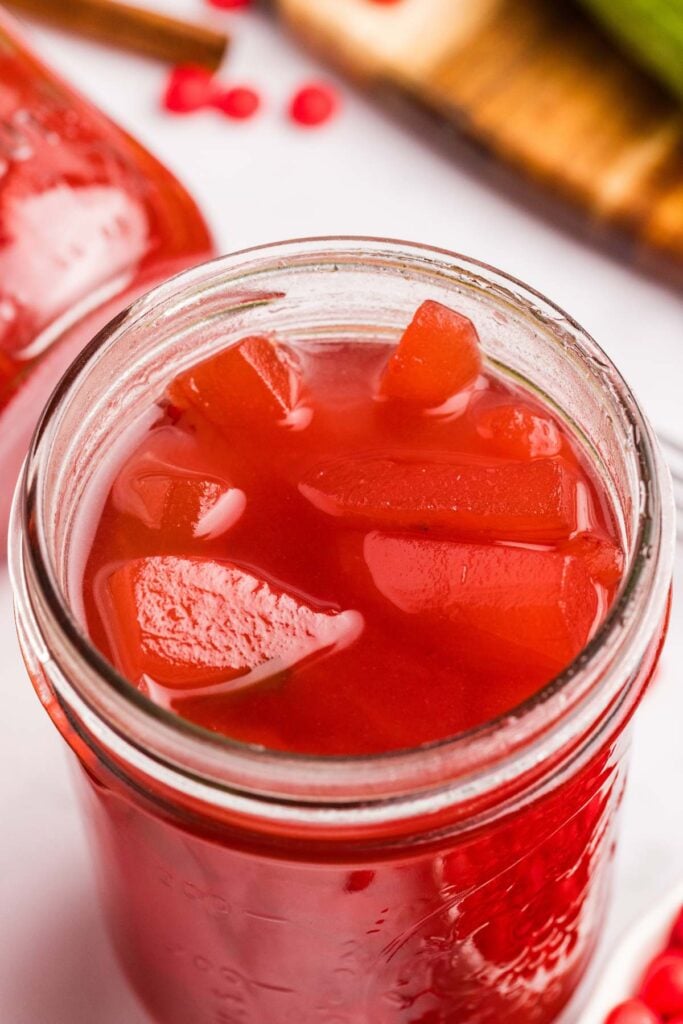
I’m getting in my order with https://www.bulkapothecary.com/. I had never thought of making baby-specific soap. Thank you for the idea!
We absolutely love your Best CP Soap Recipe and I’m looking to try this one. I have all the ingredients other than the Shea butter. Could Shea butter be substituted 1-1 with Cocoa butter?
you should double check with a lye calculator but i bet it’s totally fine! 🙂
Hello Dear, can we use this soap for adults too?
yes i use it all the time!
On this baby soap. Recipe. The water you said 8 to 11 oz! So that won’ t throw the recipe off? So are you saying i can use 8 9.10, or 11 oz ?. Thank you for sharing this recipe.
hi bridgette- that’s right, the water in soap recipes is flexible! less water: comes to trace faster and is a bit harder too work with but the bars cure faster. more water: more time to come to trace (gives you time to add fragrance, etc before it sets up) but longer curing time. i usually go in the middle
Great videos. Thank you.
I have all the ingredients for this recipe except the almond oil. I would like to substitute avocado oil. Would that work?
yes that should be a great substitute! just run it through a lye calculator to make extra sure the lye doesn’t change
Can I use anotjer wax instead Beeswax?
Great products!
do you wash and use thermometers, spoon, spatula’s for food after washing or keep separate for soap making?
you should technically have separate. also sometimes the fragrance will stick and you don’t want that mixing with your food. the thermometer I use for both, though.
I really enjoyed making this soap, it’s the 2nd soap I’ve made and these instructions were much easier to follow. My soap is still curing but it looks and smells great so far! Thank you
I’m so glad you enjoyed this soap recipe! thanks for letting me know 🙂
Thank-you very very much! Soap making has become a new joy. My husband loves the Lavender Oatmeal I’ve made. I am a beginner, I am also in the medical field as a Certified Clinical Medical Assistant, helping myself, family and others to stay safe, healthy, and happy bid do important to me. Again, THANK-YOU!
You said that after adding fragrance we should stir with hand. Can I use a spatula?
yes, that would work fine
8 to 11 ounce of water how much should I use I thought it had to be exact and I want to try this hope you can put me right
hi diane! water is flexible in soap recipes, any range of the values given is acceptable. using less water will help it cure faster. if you want a firm number, go with 10 ounces for this recipe 🙂
Thanks very informative
i am indian n i easily understand your language keep it up thanks
thank you for giving use a real recipe
🙂 you are very welcome!
Thank you for the recipe! It smells amazing and I love the wall it feels. I wanted it to be a bit more moisurizing so I added an extra ounce of coconut oil. Hoping it works!
yay! so glad you like it!
Thanks for publishing such great videos and recipes! I’ve already tried your dishwashing soap and I’m loving it. I’m wondering how many bars this recipe will make? Thanks!!
hi Megan! I usually make this in a 10 inch loaf mold and cut into 12 bars. if you are using bar molds, it will depend on the size of each bar. I’d just recommend making sure you have an extra mold so if you fill up the first one, you have a backup. Not the most official method but it works!
I’m loving your blog! I just made the dish soap bars and am waiting for them to cure :).
I am wondering if it’s possible to make this recipe without the beeswax? Would j need to add more Shea butter or coconut oil if I tried it without beeswax? Or would it be a disaster? Thank you!
hi heather! it will be fine, just a somewhat softer bar and longer cure time. run it through a soap calculator to see if the amount of lye changes.
I am new to soap making, I have wanted to do this for a very long time. I havent started making any soaps yet because I wanted to try and make my own recipes first. But that doesnt seem to be going the way I expected lol! So the question I have is even when using the Soap calculators how do I determine exactly how much of each to put in. for example I have a few butters and oils how do i know how much shea and or mango and coconut oil to add in my soap? Please help me thanks a lot!!
shanequa. it’s mainly trial and error. there are some rules of thumb: a good starting point is 30% of each olive oil, coconut oil and palm oil with some of the more exciting oils making up the difference. then just play around a little bit. you’ll want to start with the size of your mold and what batch it can hold and work out your. percentages from there.
We are all allergic to coconut over here, is it okay to sub with palm kernel? I see you posted that it is ‘palm free’ is that because of the controversial harvesting or is it more harsh on babies skin? Would you use Babassu instead? Thank you!!
I did palm free because of the controversy and I know some people are looking for that :). if you were going to substitute, you would have to run it through a lye calculator. I also think it might be a bit soft.
Can I make this with hot process using the same measurements?
I’ve never done this specific one but I don’t see why not
Hi Katie!
We all use liquid soap in the household. Can I dilute the end product with water and use in foam-pump dispenser?
I’ve never tried it, but I know there are ways to grate a bar soap to turn it into a liquid!
hola, me encanto tu receta pero tengo duda de si puedo cambiar la legia por resina blanca, espero puedas responder si lo has intentado y que pudiera ser diferente
muchas gracias!!